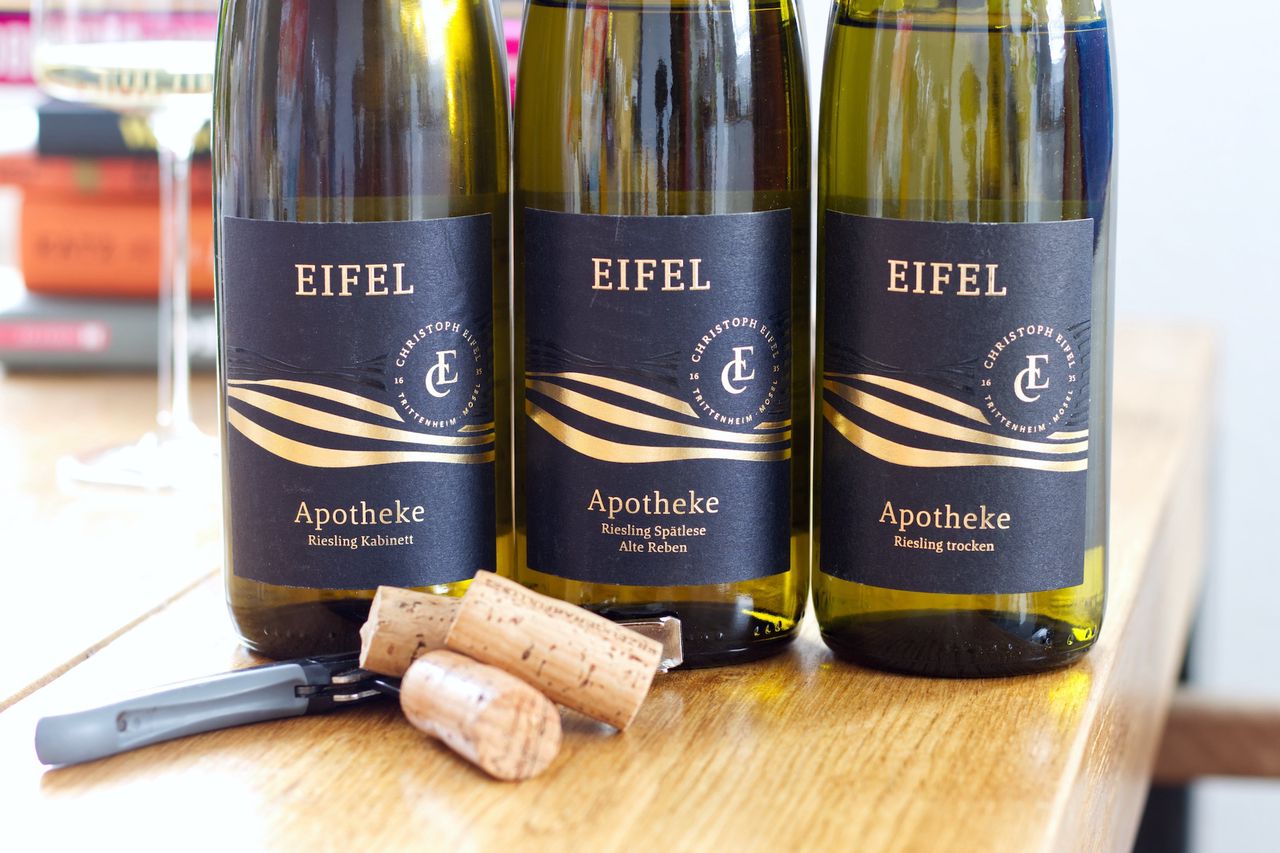Three Bottles Christoph Eifel
To start the new year, we drink three Rieslings from the Trittenheimer Apotheke of Christoph Eifel from 2021.

Another year is over. And what was at Mythos Mosel in the meantime already last year at the end of our tour, is now the start of the new year. All three wines today come from the Trittenheimer Apotheke site, which was virtually on our doorstep when we visited the Mosel. We are drinking a variant in the dry version, a Kabinett and a Spätlese from old vines. The wines were made by Christoph Eifel. He is already the sixth generation to be responsible for the winery and can look back on a tradition dating back to the 17th century. The vines stand in the Apotheke on slate soil in the steep slope on single poles. I really recommend taking a look at it on site if you have the chance. It gives a whole different sense of respect for the work of the winemakers who work the vines on the steep slopes on stone rubble. From tasting on site, the slightly ethereal herbaceousness in Christoph’s wines has stuck in my mind and I’m curious to see if I can find it again.
We start with the Riesling Trocken. The fruit in the wine seems rather yellow and reminds of mango and somehow also a little bit of red berries. The better half tastes forest berry yogurt mixed with mango yogurt. I can agree. Super fresh this is and indeed it has the herbal notes on the nose as well. On the tongue, of course, the acidity rules, as it has with the last 2021s. But this one is also really nice and ripe and fruity with pineapple and citrus notes and quite a bit of creaminess at the back of the tongue. Great entry.
The next day the wine softens a tiny bit, but soft is never likely to be the exact adjective for 2021, at least for the foreseeable future. It’s just that there’s an extreme amount of draw in the wine. That this works well here, however, I already knew from tasting on site and in general I have bought from the vintage practically only Rieslings that I have also tried before, because if it is slightly too unripe it can also be quite terrible. Here, however, as I said no problem and with the herbal nose and a fine bitter touch, it is very nice.
The Kabinett is a bit reminiscent of tarte tatin. There’s pastry and slightly sweet yellow fruit, plus mineral stone and, as in the dry wine, the herbs. On the nose, however, the Kabi just seems much quieter than the first wine. In the mouth this is super juicy and drinks away very easily just like that.
Overnight the tarte disappears in the aroma, the wine becomes creamier and meanwhile reminds of mirabelles. But that doesn’t change anything about the power on the tongue and the juiciness. Saufwein.
The Spätlese from the old vines is clearly the sweetest on the nose. There are quinces and herbs, some hay and honey. This is fine, bright and also rather quietly right now. In the mouth, of course, the acidity here is countered by the most sugar. This has texture and plenty of length.
The wine stays like this overnight and suffers a bit from its harmony. This is really nice with great acidity and balance, this is fine, elegant and clear but somehow also a bit boring. There is perhaps the kick missing in direct comparison that comes when the other two wines pull the gums off your bones and I’m even relatively sure this one does that too, but the more obvious residual sweetness and more fruit hides it well. I think the Spätlese would benefit most of all from a few years in bottle and then certainly will pull even at least. Ultimately, this is complaining at a very high level and I am very happy with such a start to the year.